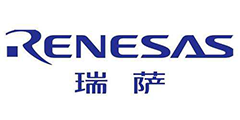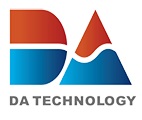- Ameya360 Component Supply Platform >
- Trade news >
- Renesas Programmable Motor Driver ICs Are First to Enable Full Torque at Zero Speed for Sensorless Brushless DC Motors
Renesas Programmable Motor Driver ICs Are First to Enable Full Torque at Zero Speed for Sensorless Brushless DC Motors
TOKYO, Japan ― Renesas Electronics Corporation (TSE:6723), a premier supplier of advanced semiconductor solutions, today introduced a family of motor driver ICs for brushless DC (BLDC) motor applications. The devices implement Renesas’ new, patent-pending technologies that enable full torque at zero speed from motors without sensors, an industry first. The new motor driver ICs enable Renesas customers to design sensorless BLDC motor systems with higher horsepower and speed at a given torque. They also improve power consumption and reliability, while reducing cost and board space by lowering the number of components designers need to use.

Renesas is introducing three new motor driver ICs with the new technology. The RAA306012 65V, 3-phase Smart Driver is a standalone device that can be paired with a variety of MCUs from Renesas or from other sources. The RAJ306101 integrates a Renesas RX13T 32-bit MCU with the RAA306012 in a single package, reducing board space and improving cost and reliability. The RAJ306102 integrates a 16-bit Renesas RL78/G1F MCU with the RAA306012, providing similar integration benefits.
The ability to enable full torque at zero speed without sensors is made possible by two Renesas innovations. Enhanced Inductive Sensing (EIS) offers stable position detection when the motor is completely stopped. When the motor is operating at extremely low speed, Motor Rotor position Identification (MRI) is used. At higher speeds, the new motor driver ICs use conventional methods. Both of the new EIS and MRI algorithms include patent-pending technology developed by Renesas.
“The advantages of sensorless design are numerous, including cost, space, power and reliability,” said Davin Lee, Vice President of the Advanced Analog Division at Renesas. “Our customers can now enjoy these benefits for systems that require full torque at zero speed. This industry first is a great example of Renesas combining our technical prowess with deep application knowledge to deliver a solution that meets a clear market need.”
“We are eager to implement sensorless technology into new products where we previously had to include sensors,” said Peter Korošec, President and CEO at Domel Inc, a global supplier of electric motors, vacuum motors, blowers, and components. “This breakthrough from Renesas will enable us to provide new products for our customers with the best available size, cost and reliability.”
Key Features of the Renesas New Motor Driver ICs
High integration including drivers, power management and current sensing
Adaptive and adjustable dead time improves efficiency
Charge pump maintains steady gate drive voltage at programmed settings
Programmable gate drive voltage enables driving of N MOSFETs and GaN FETs
Rich sensing blocks allow for better accuracy and wide-speed RPM drive
16 programmable slew rate settings minimize electromagnetic emissions
Supports all types of motor control algorithms such as Trapezoidal, Sinusoidal, and FOC
Extensive protection functions improve system safety
Winning Combinations
Renesas has combined the new motor driver ICs with complementary components from its portfolio to offer a wide array of Winning Combinations, including Cordless Vacuum Cleaner and 20V Cordless Leaf Blower. These Winning Combinations are technically vetted system architectures from mutually compatible devices that work together seamlessly to bring an optimized, low-risk design for faster time to market. Renesas offers more than 400 Winning Combinations with a wide range of products from the Renesas portfolio to enable customers to speed up the design process and bring their products to market more quickly. They can be found at renesas.com/win.
Availability
The RAA306012, RAJ306101, and RAJ306102 are available today. The RAA306012 is available in a 7mm x 7mm 48-pin QFN package. The RAJ306101 and RAJ306102 are offered in 8 x 8 mm 56-pin and 64-pin QFNs, respectively. Renesas is also offering evaluation kits for each of the new devices.
Online messageinquiry

Renesas Adds Two New MCU Groups to Blazing Fast RA8 Series with 1GHz Performance and Embedded MRAM
- Week of hot material
- Material in short supply seckilling
| model | brand | Quote |
|---|---|---|
| RB751G-40T2R | ROHM Semiconductor | |
| CDZVT2R20B | ROHM Semiconductor | |
| TL431ACLPR | Texas Instruments | |
| MC33074DR2G | onsemi | |
| BD71847AMWV-E2 | ROHM Semiconductor |
| model | brand | To snap up |
|---|---|---|
| BU33JA2MNVX-CTL | ROHM Semiconductor | |
| ESR03EZPJ151 | ROHM Semiconductor | |
| IPZ40N04S5L4R8ATMA1 | Infineon Technologies | |
| BP3621 | ROHM Semiconductor | |
| TPS63050YFFR | Texas Instruments | |
| STM32F429IGT6 | STMicroelectronics |
- Week of ranking
- Month ranking
Qr code of ameya360 official account
Identify TWO-DIMENSIONAL code, you can pay attention to


Please enter the verification code in the image below:

























